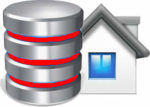Build Faster Web Application Interfaces
This Javascript book from O’Reilly is all about how to program fast performing javascript code into your applications. Javascript nowadays seems to be mandatory in most web applications whether it is for simple validation or to do interactive Ajax code.
The book begins by discussing the best place to position your javascript code in your program and when to have it load.
There is also a section on handling XHTMLHttpRequest script injection.
There is a chapter on DOM scripting, which covers things such as innerHTML vs DOM methods, as well as cloning nodes and walking the DOM structure.
High Performance Javascript contains a useful chapter on algorithms and flow control, which covers different types of loops and getting the best performance out of them, function based iterations, conditional statements and how to optimize if then else statements.
There is also a chapter on strings and regular expressions and how to improve regular expression efficiency. There is also help on using timers and how to improve their performance.
The book contains a sizeable chapter on Ajax in the High Performance Javascript book which covers dynamic script tag insertion, sending data, using XML with XPath and JSON.
The next chapter is on programming practices, a nice little chapter giving you details on how to best program your javascript code. This includes avoiding double evaluations, not repeating coding work, using lazy loading – so only load code when you need it, and conditional advance loading.
The penultimate chapter is about building and deploying high-performance javascript applications. Here such topics as combining javascript files, preprocessing javascript files, javascript compression and caching javascript files are covered.
The final chapter entitled Tools includes a number of in-built browser tools you may wish to use, as well as external tools to help with your coding, including Fiddler, YSlow and dynaTrace programs.
Overall, High Performance Javascript is a great little 200 page book. If you have been programming JavaScript and/or Ajax and want to learn more about speeding up your code and also learning the best way to program then this book would make a great read.

